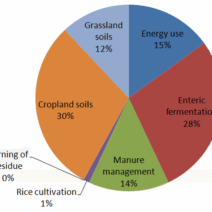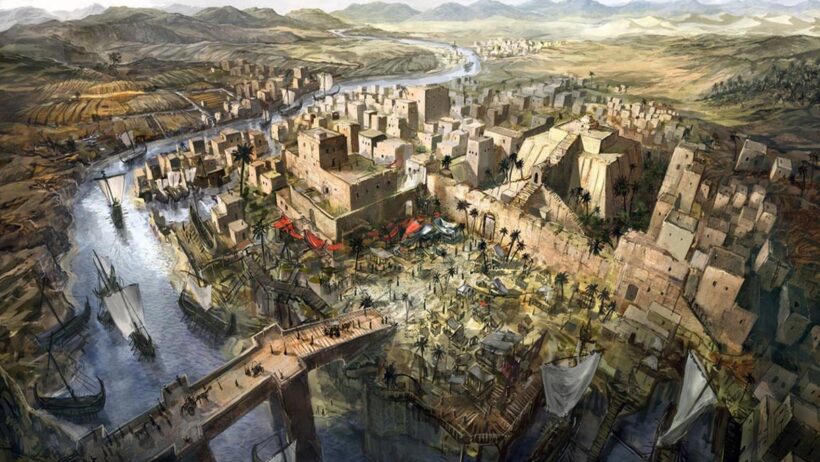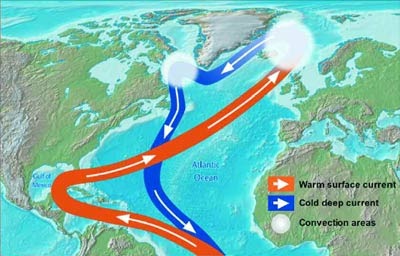Mesopotamia, often hailed as the Cradle of Civilization, is a region that lies between the Tigris and Euphrates rivers, primarily in what is now modern-day Iraq. The climate of this ancient land was a significant factor in shaping its societies, cultures, and advancements. Understanding Mesopotamia’s climate involves exploring the delicate interplay between natural phenomena and human ingenuity that fostered the development of one of the earliest known civilizations.
The climate of Mesopotamia is predominantly classified as semi-arid. Characterized by hot, dry summers and relatively cool winters, it experiences minimal rainfall, with annual precipitation averaging between 150 to 300 millimeters. This scarcity of rain posed considerable challenges for agriculture, necessitating innovative approaches to irrigation and land management. As such, the people of Mesopotamia were compelled to devise ingenious methods for harnessing the rivers that flowed through their land.
In the summer months, temperatures can soar, often exceeding 40 degrees Celsius (104 degrees Fahrenheit). Conversely, winter temperatures can drop significantly, particularly at night. These dramatic shifts in temperature exemplify the region’s volatility. Such extremes necessitated the construction of architecture that not only provided shelter but also served as a reflection of the astute environmental understanding of its inhabitants.
Rainfall in Mesopotamia is highly unpredictable and tends to occur in sporadic bursts, leading to flooding in some areas while leaving others parched. This inconsistency catalyzed the necessity for irrigation techniques, which were paramount for agriculture. Canals and levees were constructed, directing the waters of the Tigris and Euphrates to farmlands, transforming arid soil into fertile ground capable of supporting a burgeoning population.
The interplay of these climatic conditions fostered a remarkable agrarian society. The Mesopotamians cultivated an array of crops, including barley, wheat, legumes, and dates. Barley, in particular, was a staple; it was durable and well-suited for the region’s conditions. The cultivation of these crops not only sustained the local population but also facilitated the rise of trade, as surplus agricultural products could be exchanged for other goods.
In addition to irrigation, the Mesopotamians exhibited a profound understanding of the celestial patterns that governed seasonal changes. They observed the rhythm of the seasons with great precision, allowing them to optimize planting and harvesting times. This understanding was reflected in their early calendars, which were meticulously aligned with the natural environment. Such innovations laid the groundwork for a society that was both productive and intricately connected to its surroundings.
However, the relationship between Mesopotamia’s climate and its civilization was not without its challenges. Prolonged droughts could have devastating effects. Adverse climatic conditions often led to crop failures, which could precipitate famine and social unrest. One of the most significant influences on the trajectory of Mesopotamian societies was their ability to adapt to these changes. This adaptability speaks volumes about the resilience of human civilizations in response to climatic adversities.
Ancient records suggest that Mesopotamian societies were well aware of their vulnerabilities. They constructed granaries to store surplus food, ensuring that their populations could withstand periods of scarcity. Knowledge about seasonal cycle variability was deeply embedded in their agricultural practices, underscoring a societal commitment to sustainability, long before the concept gained traction in contemporary discourse.
As climate patterns evolved, so too did Mesopotamian civilizations. The rise and fall of city-states such as Ur, Babylon, and Assyria were intrinsically linked to climatic conditions and the management of natural resources. Archeological evidence indicates that shifts towards more arid conditions prompted migrations and societal changes, as communities sought more hospitable environments to sustain their livelihoods. This historical narrative serves as a poignant reminder of the critical intersections between climate and human civilization.
Moreover, the ideological beliefs of the Mesopotamians intertwined with their environment. They viewed natural phenomena—such as floods and droughts—as manifestations of divine will. Such interpretations shaped not only their agricultural practices but also their cultural and spiritual lives. The legendary Epic of Gilgamesh, for instance, reflects the profound connection between humanity and nature, illustrating how climate impacts were woven into the very fabric of Mesopotamian mythology.
As we delve into the complexities of Mesopotamia’s climate, it becomes evident that the region’s weather was not merely a backdrop; it was a character in the grand narrative of human development. This nuanced understanding fosters a greater appreciation for current environmental challenges. The ancient civilizations of Mesopotamia encountered their own climatic dilemmas, providing valuable lessons about adaptation, resilience, and the intricate dance between humanity and nature.
In a world grappling with climate change, the historical parallels drawn from Mesopotamia offer profound insights. The importance of sustainable agricultural practices, resource management, and the recognition of climatic variances are as relevant today as they were thousands of years ago. The legacy of Mesopotamia serves as both a cautionary tale and a source of inspiration; it prompts us to question how modern societies can learn from the past to navigate the complexities of our own environmental futures.
In conclusion, Mesopotamia’s climate played a pivotal role in shaping the contours of its civilization. The adaptation to environmental challenges, agricultural innovations, and cultural ramifications of climate influence underscore the interplay between humanity and its surroundings. As we reflect on this ancient epoch, it is crucial to foster a deeper understanding of our current environmental challenges and cultivate a sustainable future grounded in the lessons learned from those who once thrived in the Cradle of Civilization.




